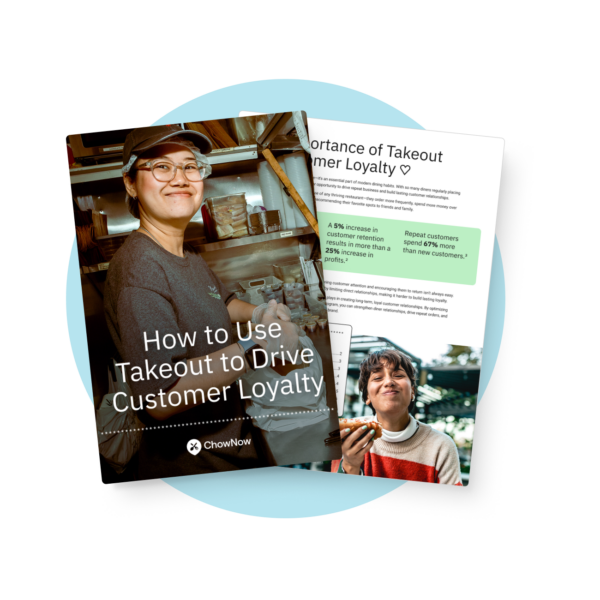How to Train Your Restaurant Staff on New Systems Without Slowing Down Service

Applying new technology to your restaurant’s operations is exciting, but integrating it always comes with one immediate hurdle: getting your staff up to speed.
In this article, you’ll discover how training your restaurant staff on new systems doesn’t have to be a big ordeal, slowing down service for guests and costing you money.
Yes, it does take time, but not as much as you’d think, so long as you follow these seven steps—your team will learn faster, retain information better, and not disrupt business.
Why Training on New Tech Feels So Hard
Restaurant technology is supposed to make running your restaurant easier, but if you don’t know how to approach training staff, it can feel like more trouble than it’s worth.
Between a busy service, tight schedules, and our natural human tendency to resist change, it’s no surprise that getting everyone on board can be a challenge.
The biggest obstacle?
Training your team quickly and effectively without slowing down operations.
The reality is that restaurant teams are busy, and learning a new POS system, delivery app, or inventory tool can feel like one more thing to juggle.
If training takes too long, it slows down service.
If it’s rushed, mistakes happen.
And if staff don’t see the value, they may resist using the new system altogether and will probably revert back to old habits, which defeats the whole purpose of implementing a new system in the first place.
When staff are given clear, hands-on guidance in a structured way that fits into their workflow, they learn faster and feel more confident using the new technology—leading to smoother shifts, fewer mistakes, and a better experience for both employees and customers.
1. Start with the ‘Why’—Get Staff to Buy-In

Humans, in general, don’t like change. It goes against our nature, and when you’re trying to impose it on a group of people (your employees), it can be especially difficult, but there is a way to do it successfully.
Make it clear that this isn’t just about management adopting the latest tech trend. Explain to them how the new system will streamline their workflow, reduce stress, and prevent common frustrations, such as lost orders, miscommunications, or delays during peak hours.
For example, managing online orders can be super frustrating when you have to monitor and accept orders on multiple tablets—one for each delivery app. But with an order aggregation tool, like ChowNow’s, all third-party delivery orders appear on a single tablet, making it easier to track and fulfill orders without having to juggle and switch back and forth between apps and tablets.
This means fewer missed orders, fewer delays, and a smoother workflow overall. When staff see that daily challenges—like managing online orders across multiple tablets—will no longer be an issue, it becomes much easier to get everyone on board.
2. Use a Hands-On, Step-by-Step Approach
Telling staff how to use a new system isn’t enough—they need to experience it for themselves. Hands-on training ensures they learn by doing, making it easier to remember key functions and apply them in real-time service.
There’s a concept called The Learning Pyramid that states a person will retain 90% of what they just learned if they immediately act on the thing they were just trained to do. Our brains learn best by making mistakes, being corrected, and reinforcing the information through active engagement.
Show, don’t just tell.
Instead of lengthy explanations or passive demonstrations, let staff use the system themselves. Encourage them to navigate the interface, process test transactions, and troubleshoot basic issues. The more they interact with the system, the more comfortable they become.
Break it down.
Trying to teach every function at once can be overwhelming, especially in a fast-paced restaurant environment. Instead, break training into small, manageable steps. Start with the most essential tasks—like taking an order or managing a delivery—before moving on to more advanced features.
Assign a training lead.
Designate a tech-savvy team member as a go-to resource for questions and ongoing support. This person can reinforce key skills, troubleshoot issues, and ensure that everyone feels comfortable using the system. Peer-to-peer learning is often more effective than top-down instruction.
65% of people are visual learners, so show them how to do it, then let them get in there and get their hands dirty so the training will stick.
3. Keep Training Short and Integrated Into Shifts
Restaurant staff don’t have the luxury of sitting through long, dedicated training sessions—especially during busy hours. The best way to train on new systems without disrupting service is to weave learning into their existing workflow.
Use “micro-training” moments throughout service.
Instead of pulling staff off the floor for extended training, break it into short, focused sessions. A 5-minute refresher during pre-shift meetings can be enough to introduce a new feature, answer questions, or review common issues. These bite-sized lessons keep training manageable and relevant.
Let new hires learn by shadowing a staff veteran.
For new team members, hands-on experience is the best teacher. Pair them with an experienced staff member who already knows the system, allowing them to learn in real-time by observing and gradually taking over tasks themselves.
Splitting up training into bite-size chunks is super effective, but sometimes, you or a trainer can’t be there to lend a hand, which is why you need to keep training material close at hand.
4. Make Training Materials Accessible

Even after hands-on training, staff will need occasional reminders—especially during a busy service. Having easy-to-access training materials ensures they can quickly find answers without needing to chase down a manager.
Create quick-reference guides.
Not every staff member will remember every step right away, so a simple cheat sheet with the most common actions can be a lifesaver. For example:
- How to accept an online order
- Processing a refund on the POS or delivery app
- How to adjust a menu item
Keep these guides short, visual, and easy to scan—bullet points and step-by-step instructions work best.
Post cheat sheets where staff need them most.
Place laminated cheat sheets (paper sheets will get destroyed quickly) near POS stations, delivery tablets, and kitchen display systems so staff can reference them on the fly. If they forget how to complete a task, they won’t have to stop service or ask a manager—they can just glance at the guide and keep moving.
Keeping quick guide training material close by will save you a ton of time and headache. Even after your initial training sessions, new team members months from now will appreciate the handy references.
5. Simulate Real-Life Scenarios
You can expand your hands-on approach to training by recreating real-life situations that team members then have to troubleshoot in the moment. Learning in a controlled setting is important, but working through realistic scenarios ensures they can apply what they’ve learned when it really matters.
Practice handling common situations.
Instead of just walking through system functions, telling them which buttons to push, simulate real-world challenges your staff will face. Have them:
- Accept and manage a flood of online orders: Staff should practice prioritizing, confirming, and fulfilling orders efficiently.
- Process a refund for a frustrated customer: Walk through the steps of locating an order, issuing a refund, and confirming it went through.
- Handle a mixed rush of dine-in and takeout orders: Ensure staff can quickly navigate between different order types without delays or errors.
Why this works.
Learning in a controlled environment is one thing, but real-life restaurant service is fast-paced and unpredictable. These simulations give staff the opportunity to make mistakes in a no-stakes setting, ask questions, and develop muscle memory before they’re thrown into a high-pressure situation.
Giving your team a mock practice round shows you which areas staff are struggling so you can make adjustments and know what to watch for in regular service.
6. Monitor, Support, and Reinforce Learning

Training doesn’t stop after the initial rollout—checking in with your team and giving them ongoing support keeps staff feeling confident and capable of using the new system.
Follow up to catch training gaps early.
Check-in with staff a few days or weeks after training to see how they’re doing. Ask if they’re running into any issues or if there are specific functions they find confusing.
If multiple team members struggle with the same thing—like processing refunds or managing online orders—it’s a sign that part of the training needs to be reviewed.
Encourage questions without pressure.
Staff need to feel comfortable asking for help when they’re unsure about something. Make it clear that it’s okay to ask questions, even during a busy shift.
A simple reminder like, “If you’re ever unsure how to do something, just ask—we’d rather take a second to figure it out than risk an error,” helps create a culture where learning is ongoing.
Use positive reinforcement to build confidence.
When staff successfully use the new system, acknowledge it—a simple, “Great job managing those delivery orders today!” can go a long way in reinforcing good habits.
Telling team members when they’re doing great also opens the door for them to leave you feedback on areas in which they might be struggling.
7. Adjust Training Based on Feedback
Even with a solid training plan, every restaurant team learns at a different pace, and some aspects of the new system might be a challenge to grasp.
Listen to staff and identify pain points.
Encourage employees to share what’s working and what’s confusing. Are they finding a particular function difficult? Are certain processes slowing them down instead of helping?
Regular feedback sessions—whether through one-on-one check-ins, team meetings, or anonymous surveys—can reveal which parts of the training need improvement. Pay attention to:
- The questions staff ask most often
- Where mistakes are happening during service
- Any hesitation when using certain features
Refine training based on real-world use.
Once your new system is in full swing, you might notice new challenges that pop up that weren’t present during initial training.
If certain features are frequently missed or staff repeatedly ask about the same functions, you need to adjust your approach:
- Simplify instructions: If something isn’t clicking, see if you can explain it in a clearer, more direct way.
- Reinforce training during shifts: Use quick, real-world refreshers to go over functions staff are struggling with.
- Update training materials: Add missing details, clarify steps, or create a new cheat sheet if needed.
The simpler the training, the more likely employees are to retain and apply what they’ve learned.
Keep Training Simple and Continuous
Training isn’t a one-time event but an ongoing process. With new feature rollouts, software updates, and new hires, having a practical, hands-on, and approachable training system ensures that adopting new systems is less likely to disrupt service.
Contact ChowNow to learn how our easy-to-use system helps your team get up to speed quickly so you can train staff on new technology without disrupting service.






